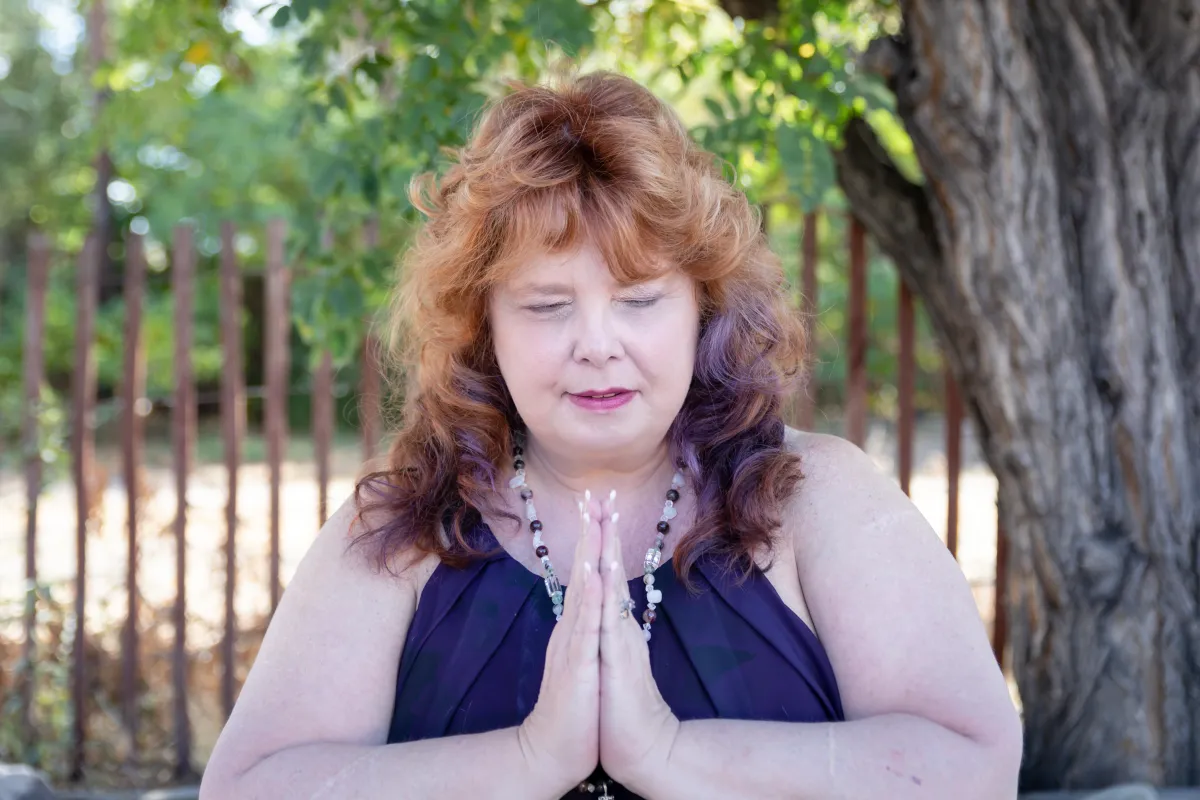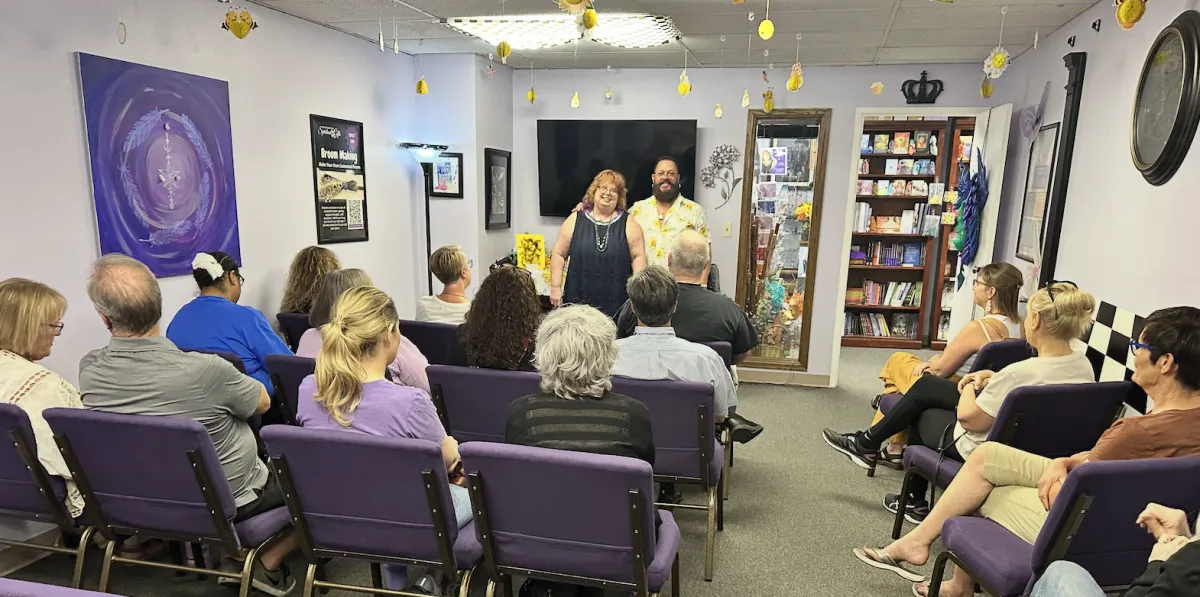
5207418
Discover Your Spiritual Gifts in Denver
A Light-Filled Spiritual Haven for the Awakening Soul
Discover a welcoming, inclusive community where you can explore your path, connect with others, and uncover the sacred gifts within you.
Discover Your Spiritual Gifts in Denver
A Light-Filled Spiritual Haven for the Awakening Soul
Discover a welcoming, inclusive community where you can explore your path, connect with others, and uncover the sacred gifts within you.
Ever feel like you’re carrying emotions that aren’t even yours?
You might be an empath. Discover your unique sensitivity—and how to protect your energy—with our FREE Empath download!
Ever feel like you’re carrying emotions that aren’t even yours?
You might be an empath. Discover your unique sensitivity—and how to protect your energy—with our free Empath E-book.

You’ve felt it — that quiet nudge.
A sense that there’s more to life than what you’ve been told.
Maybe you’ve always been intuitive.
Maybe you’re just beginning to awaken.
Or maybe you’ve walked many paths… and now you’re searching for one that truly feels like you.
You are a seeker.
And this space was created with you in mind.
“Sacredness is the dedication and devotion of holding divine space through respect, rituals and service for yourself and others.” – Vialet Rayne

You’ve felt it — that quiet nudge.
A sense that there’s more to life than what you’ve been told.
Maybe you’ve always been intuitive.
Maybe you’re just beginning to awaken.
Or maybe you’ve walked many paths… and now you’re searching for one that truly feels like you.
You are a seeker.
And this space was created with you in mind.
“Sacredness is the dedication and devotion of holding divine space through respect, rituals and service for yourself and others.” – Vialet Rayne
Who We Are – Sacred Space, Sacred People
Welcome to Discover Your Spiritual Gifts, a sacred sanctuary for spiritual seekers in the heart of Denver, Colorado.
We’re more than just a metaphysical center — we’re a thriving community of intuitive, healers, teachers, and awakened souls dedicated to personal growth, psychic development, and soul-level transformation. Whether you’re just beginning your spiritual journey or have walked many lifetimes on this path, you’ll find a place here — a place to be seen, heard, and supported.
This is where transformation begins.
Where curiosity becomes clarity.
Where seekers become seers.
At Discover Your Spiritual Gifts, we hold space for those exploring their gifts, deepening their connection to Spirit, and stepping fully into their soul purpose. This is a Denver spiritual community built on authenticity, love, and sacred intention.
Come as you are. Leave more connected, more empowered, more you.
Who We Are – Sacred Space, Sacred People
Welcome to Discover Your Spiritual Gifts, a sacred sanctuary for spiritual seekers in the heart of Denver, Colorado.
We’re more than just a metaphysical center — we’re a thriving community of intuitive, healers, teachers, and awakened souls dedicated to personal growth, psychic development, and soul-level transformation. Whether you’re just beginning your spiritual journey or have walked many lifetimes on this path, you’ll find a place here — a place to be seen, heard, and supported.
This is where transformation begins.
Where curiosity becomes clarity.
Where seekers become seers.
At Discover Your Spiritual Gifts, we hold space for those exploring their gifts, deepening their connection to Spirit, and stepping fully into their soul purpose. This is a Denver spiritual community built on authenticity, love, and sacred intention.
Come as you are. Leave more connected, more empowered, more you.
What Makes Us Different
At Discover Your Spiritual Gifts in Denver, we’re more than a spiritual center — we’re
a community of heart-centered providers committed to serving and supporting your journey.
Inclusive & Welcoming
We honor all spiritual paths, all identities, and all stages of awakening. This is a space where everyone belongs.
Professional & Ethical
Our intuitive readers, energy healers, and spiritual educators operate with the highest integrity —offering grounded, compassionate guidance in every session, service, and class.
High-Vibrational Space
Our center is light-filled and intentionally curated to uplift, inspire, and connect. People often say, “It just feels good here.”
Community-Led, Not Ego-Driven
DYSG isn’t about one voice or one way. We are a collective of divinely guided
professionals working together to create a supportive and sacred environment for spiritual development and transformation.
What Makes Us Different
At Discover Your Spiritual Gifts in Denver, we’re more than a spiritual center — we’re
a community of heart-centered providers committed to serving and supporting your journey.
Inclusive & Welcoming
We honor all spiritual paths, all identities, and all stages of awakening. This is a space where everyone belongs.
Professional & Ethical
Our intuitive readers, energy healers, and spiritual educators operate with the highest integrity —offering grounded, compassionate guidance in every session, service, and class.
High-Vibrational Space
Our center is light-filled and intentionally curated to uplift, inspire, and connect. People often say, “It just feels good here.”
Community-Led, Not Ego-Driven
DYSG isn’t about one voice or one way. We are a collective of divinely guided
professionals working together to create a supportive and sacred environment for spiritual development and transformation.
Our Core Offerings
Classes & Events
With over 25+ in-person programs every month, we offer the widest variety of spiritual education in Denver. We offer psychic development, sound healing, energy healing, shamanic
programs, and much more, there’s something for every seeker.
Psychic & Intuitive Readings
Our readers offer diverse intuitive gifts — including psychic insight, mediumship, energy alignment, and spiritual guidance — all grounded in compassion and skill.
Healing Practitioners & Providers
Experience holistic healing with one of our professional providers, including energy workers, coaches, sound healers, and body-centered therapists.
Our Core Offerings
Classes & Events
With over 25+ in-person programs every month, we offer the widest variety of spiritual education in Denver. We offer psychic development, sound healing, energy healing, shamanic
programs, and much more, there’s something for every seeker.
Psychic & Intuitive Readings
Our readers offer diverse intuitive gifts — including psychic insight, mediumship, energy alignment, and spiritual guidance — all grounded in compassion and skill.
Healing Practitioners & Providers
Experience holistic healing with one of our professional providers, including energy workers, coaches, sound healers, and body-centered therapists.
Not Sure Where to Start?
You're not alone — many of our guests are just beginning their spiritual journey or seeking a deeper connection.
We invite you to visit our center in Denver, walk through the space, and feel the energy for yourself. We’re open Thursday through Saturday, 12–5 PM for you to stop by, ask questions, and explore.
Want a more personal introduction?
Schedule a free 30-minute Discovery Visit to meet with a team member, get a guided tour, and learn about the classes, services, and resources that best support where you are right now.
Come as you are — and discover what’s here for you.
Not Sure Where to Start?
You're not alone — many of our guests are just beginning their spiritual journey or seeking a deeper connection.
We invite you to visit our center in Denver, walk through the space, and feel the energy for yourself. We’re open Thursday through Saturday, 12–5 PM for you to stop by, ask questions, and explore.
Want a more personal introduction?
Schedule a free 30-minute Discovery Visit to meet with a team member, get a guided tour, and learn about the classes, services, and resources that best support where you are right now.
Come as you are — and discover what’s here for you.
Heartfelt Words From Those Who Found Their Way Home
I recently had the wonderful experience of attending several classes with Vialet, and it has truly been a transformative journey. Each class was not only informative but also infused with a sense of fun and inspiration. Having participated in many spiritual teachings before, I found Vialet’s unique approach to be exceptionally illuminating. Her teaching style resonates deeply, making complex spiritual concepts easily understandable and applicable to everyday life.”
“Vialet is a wonderful a collision of college professor (masterful teacher), mermaid (vibrant and playful) and sacred teacher (safe with much wisdom to impart). Our class had varying degrees of experience and Vialet met each of us exactly where we were.”
“I experienced my first Sacred Sound Bath with Vialet. While having attended many other Tibetan singing bowl meditations this one took it to a whole new level for me. Gong, bowls, chimes, drums, ocean drums and more. Sounds like so much but I've never had a more deep meditative experience. I've already signed up for
more!"
— Laura L.
— Laura R.
— Susan B.
Heartfelt Words From Those Who Found Their Way Home
I recently had the wonderful experience of attending several classes with Vialet, and it has truly been a transformative journey. Each class was not only informative but also infused with a sense of fun and inspiration. Having participated in many spiritual teachings before, I found Vialet’s unique approach to be exceptionally illuminating. Her teaching style resonates deeply, making complex spiritual concepts easily understandable and applicable to everyday life.”
— Laura L.
“Vialet is a wonderful a collision of college professor (masterful teacher), mermaid (vibrant and playful) and sacred teacher (safe with much wisdom to impart). Our class had varying degrees of experience and Vialet met each of us exactly where we were.”
— Laura R.
“I experienced my first Sacred Sound Bath with Vialet. While having attended many other Tibetan singing bowl meditations this one took it to a whole new level for me. Gong, bowls, chimes, drums, ocean drums and more. Sounds like so much but I've never had a more deep meditative experience. I've already signed up for
more!"
— Susan B.
What’s Waiting for You on the Other Side
Imagine this:
You no longer second-guess your intuition — you honor it.
You’ve uncovered not just your spiritual gifts, but the purpose that lights your path.
You step into a space where your energy is welcomed before you even speak.
You’ve found a rhythm that doesn’t just align with your spirit — it nourishes it.
This is more than a possibility.
It’s a lived experience.
It’s a sacred homecoming.
And it’s unfolding here, every single day —
waiting with open arms, just for you.


And If You Don’t Answer the Nudge?
The seeking doesn’t stop — it just grows quieter… but deeper.
The longing lingers, like a song you can’t quite name.
And your gifts — patient but persistent — keep whispering from within.
This is your invitation to stop drifting.
To come home to yourself.
To root.
To rise.
To begin — truly begin.
What’s Waiting for You on the Other Side

Imagine this:
You no longer second-guess your intuition — you honor it.
You’ve uncovered not just your spiritual gifts, but the purpose that lights your path.
You step into a space where your energy is welcomed before you even speak.
You’ve found a rhythm that doesn’t just align with your spirit — it nourishes it.
This is more than a possibility.
It’s a lived experience.
It’s a sacred homecoming.
And it’s unfolding here, every single day —
waiting with open arms, just for you.

And If You Don’t Answer the Nudge?
The seeking doesn’t stop — it just grows quieter… but deeper.
The longing lingers, like a song you can’t quite name.
And your gifts — patient but persistent — keep whispering from within.
This is your invitation to stop drifting.
To come home to yourself.
To root.
To rise.
To begin — truly begin.
DYSG Family
Check out all of Our Offerings.
MYSTERY SCHOOL WEBSITE
VIALET'S WEBSITE
ONLINE ACADEMY WEBSITE

The center is open 12 PM – 5 PM Thursday – Saturday for Visitors & Tours
Phone Number- +1 720-650-2139
@ Copyright 2026 - Discover Your Spiritual Gifts LLC.
7500 E Arapahoe Rd. Suite 240 & 208 Centennial, CO 80112
DYSG Family
Check out all of Our Websites & Offerings.

The center is open 12 PM – 5 PM
Friday – Saturday for Visitors & Tours
Phone Number- +1 720-650-2139
@ Copyright 2026 - Discover Your Spiritual Gifts LLC.
7500 E Arapahoe Rd. Suite 240 & 208 Centennial, CO 80112
